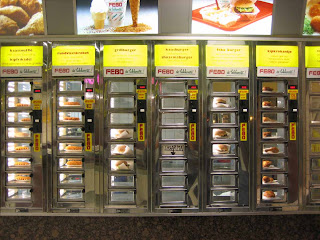The main, affordable, shopping streets in London and Amsterdam are:
- Amsterdam - Kalverstraat
- London - Oxford Street
This post is about these two streets...
Shopping:
Oxford Street has more than 300 shops, I’m not sure how many there are on Kalverstraat. Never-the-less there are many shops which you can find at least one of on both streets including: River Island, Zara, H&M, Esprit, Mexx, Morgan, Miss Sixty, O’Neill, Nike, Foot Locker, Waterstones and stinking old Lush. Although this sounds like good news for an English girl in a foreign land, the Amsterdam versions of the shops are normally tiny in comparison to the size of the London ones.
History:
Oxford Street follows the route of a Roman road which linked Hampshire with Colchester and became one of the major routes in and out of London.
The oldest documented reference to ‘die Calverstraete’ dates from the January 1393. The name “Klaverstraat” refers to the previous trading in cows, oxen and calves which took place in the street until 1629. After the disappearance of the cattle-market, the Kalverstraat turned into a shopping street with broader appeal.
Opening hours:
Amazingly most of the shops on the Kalverstraat are open on Sundays, which is very unusual for Holland. During the week they all close at 6pm, except on Thursdays for late night shopping until 10pm. Most Oxford Street shops are open on Sundays too, and John Lewis opens at 11:30 for browsing until you’re legally allowed to buy things at 12noon. Most shops on Oxford Street are open until 8pm during the week and later on Thursdays.
Other interesting facts that don’t deserve headings of their own:
Kalverstraat is the equivalent of Mayfair on the Monopoly board, making it sound far more upmarket than it actually is. Oxford Street is part of the green set of streets on the British Monopoly board together with Regent Street and Bond Street. In Holland the green streets are represented by streets in Rotterdam, presumably because there are not enough interesting Amsterdam streets to fill an entire board (god knows what they do about getting hold of four famous stations).
Both streets have live webcams. The Kalverstraat one updates freakishly often – it’s almost like live TV (big brother strikes again). The Oxford Street webcam is provided by Transport for London and is normally not working.
- Kalverstraat webcam: http://kalverstraat.webcam.nl/
- Oxford Street webcam: http://www.camvista.com/england/london/oxfordstreet.php














